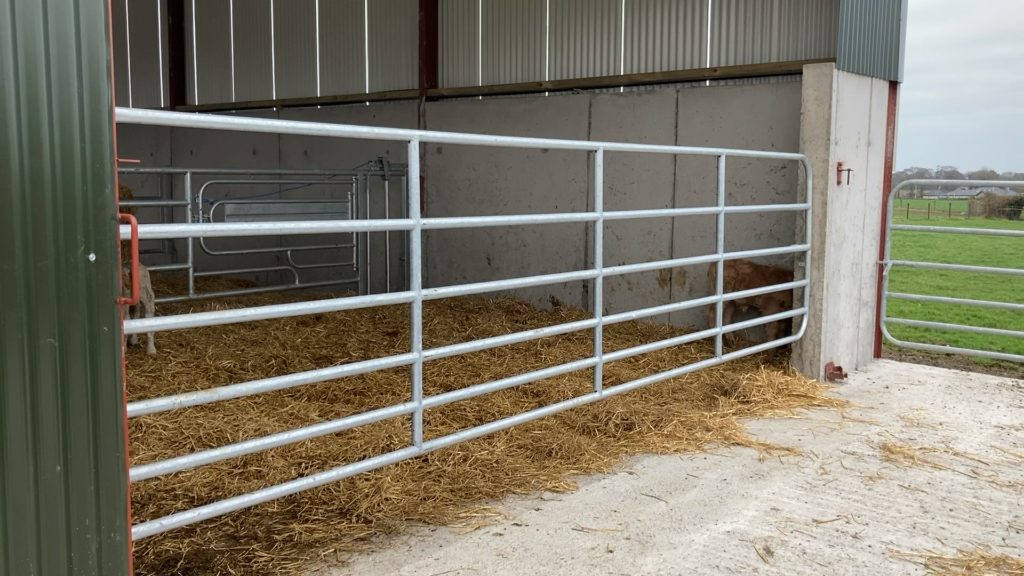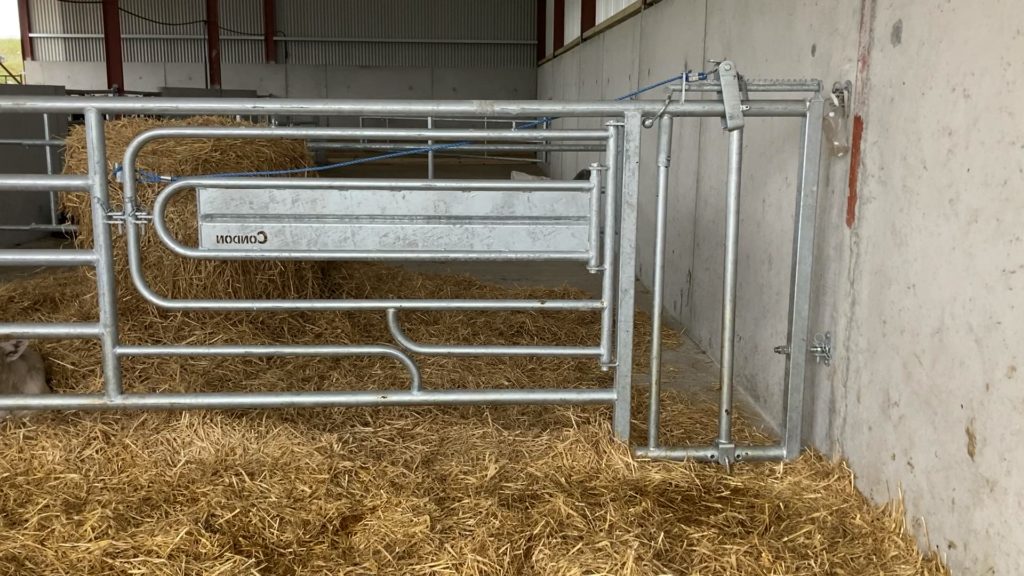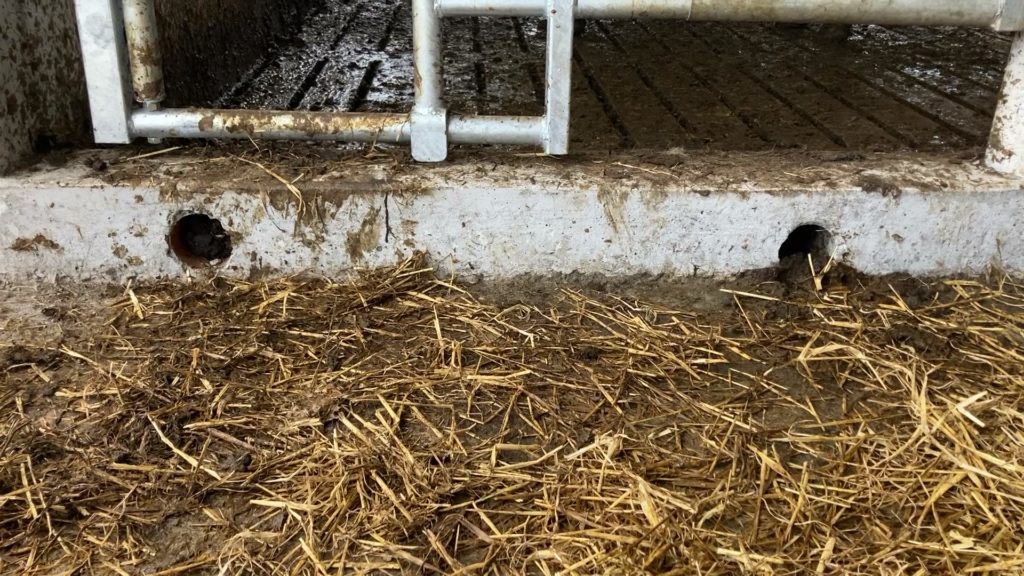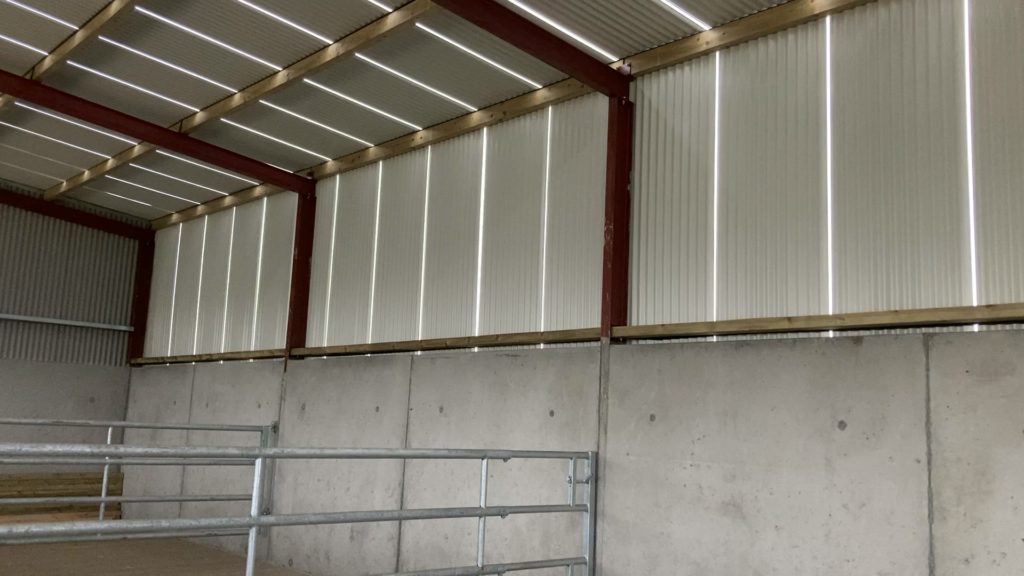Last week saw Agriland head to Timahoe in Co. Kildare to chat to Sean Cawley, a suckler and beef farmer who recently saw cattle move into his new 5-bay slatted shed with a solid lieback.
The Kildare native runs 45 suckler cows along with buying in weanlings and/or stores and bringing everything on the farm to beef- with replacement heifers bought in.
Sean milked cows alongside keeping sucklers, but moved away from dairy a few years back and since has focused his efforts on drystock – which includes 60 ewes.
The new 5-bay shed is not the only shed Sean has built or converted over the years and put his reasoning down to building the new shed as saying you can never have enough shed space.

Speaking to Agriland outside his new shed, Seamus said: “You can never have enough shed space in my opinion. You will always have something to fill it with.
“It’s very handy for either housing cows that have calved or cows close to calving. Also, I can use it to house beef cattle for finishing or use it as a storage space for hay/straw.
“And, although it wasn’t built for that purpose, the dry bedded area at the back of the shed could be used for lambing down my ewes as well, so I’ll be bale to get many uses out of it.”
‘I knew what I wanted from day one’
Sean knew what he wanted from day one and had the design of the shed in his head and went about building it with the help of two main contractors, Clive Guing and Alan Dalton.
Clive Guing carried out the groundwork and the laying of all the concrete, while Alan Dalton stood the frame of the shed.
To keep costs down, Sean kitted out the inside of the shed himself by hanging all the gates and feeding barriers.
All of the gates and feeding barriers were supplied by Condon Engineering.

Inside the new shed
The new shed has left Sean with plenty of options, something which he wanted.
The fact he keeps 45 suckler cows along with buying in store cattle, the shed has left him the option of finishing stock as well as calving down his herd of suckler cows in it.
Furthermore, the lieback area, which won’t be in use all year round, will also act as a storage area and if Sean wanted he would also have the option to lamb down his flock of ewes here because he calves down his cows mainly in January and February, while the ewes lamb down in March.
Taking a look at the front of the shed, it consists of five slatted pens. At the time of our visit, Sean had one pen of calved down cows in it, while the rest of the shed was home to both breeding heifers and store bullocks.
As the calving season progresses and other finished cattle in other sheds on the farm are sent to the factory, the store bullocks and breeding heifers in the shed will be moved out to make room for the other calved cows and their newly born calves.

4-bar heavy duty gates are hung between each pen, while three small water troughs were installed at the back of the pens.
Precast walls separate the slatted pens from the dry lieback at the back of the shed. However, for calves to access the lieback area, creep gates were installed in each pen. These gates can be either swung open or taken down with ease, if Sean wanted to let older cattle lie at the back of these pens. Standard diagonal feed barriers are hung in each bay also.
Moving to the back of the shed, the entire area is made up of a solid concrete surface. Again heavy duty 4-bar gates are hung to divide up each pen.
At one end of the shed, a sliding door can be found. To increase airflow within the shed, where the sliding door is, it can be pulled back and just inside is a light 6-bar gate which obviously prevents the calves from getting out into the yard.
Sean says at night he closes in the sliding door when the temperatures drop.
Just inside the first pen, Sean installed a calving gate. He hasn’t made use of it yet, as he calves down the cows in another shed and then brings down the cows when calved to the new shed; however, he expects to make good use of it in time.
A nice feature to keep the straw bedded area behind the slatted pens dry is the inclusion of two incisions through the concrete step between the slats and the lieback area.
This not only helps to keep straw from going into the slats but allows for the straw bedded area to remain dry.
A noticeable feature straightaway of the shed is the inclusion of spaced sheeting. Sean says he finds it a great job.
He said that even when its lashing rain, he’s amazed how no rain gets into the shed and says it helps to create an ideal airy environment – especially for young calves at the back of the shed who spend most of their time in the straw bedded area.
Cost
Sean went down the route of funding the entire cost of the shed himself, opting not to apply for a grant under the Targeted Agricultural Modernisation Scheme (TAMS II).
The Kildare native felt the whole process would be a lot more straightforward to do and felt that a 40% grant, which what he would likely to be entitled to, wouldn’t justify all that comes with going down the route of a grant.
Looking at the cost of the shed, the overall cost came to €82,500 (including VAT).
The breakdown of the cost of the shed is as follows:
- Concrete and associated groundwork – €40,000;
- Slats – €8,500;
- Frame of the shed – €27,000;
- Gates, feed barriers and water troughs – €7,000;
- Total cost: €82,500

Speaking about the decision to go ahead and build the shed, Seamus said he is very happy he did it when he did and had bought it in time before prices soared.
He added: “I’m lucky in ways I bought the shed when I did because with way the cost of materials have gone, I’d be looking at another €30,000 on top of what I paid.
“I had a lot of what I needed bought early last year for the shed and the fact I could do a bit of the work involved such as fitting everything inside the shed helped me to save a few more bob.
“Like I said, and you can see there yourself, even though I’m back in cow numbers this year by 10 head or so, each slatted pen is full of cattle and so are the other sheds I have, so I’m glad I have it and can make use of it.”















